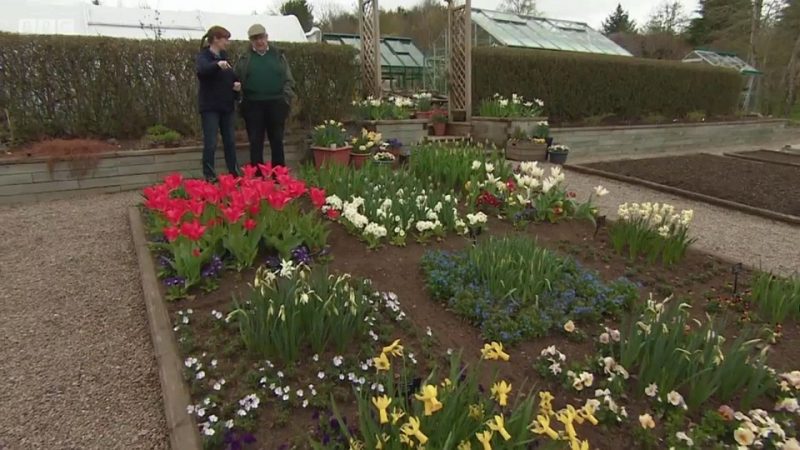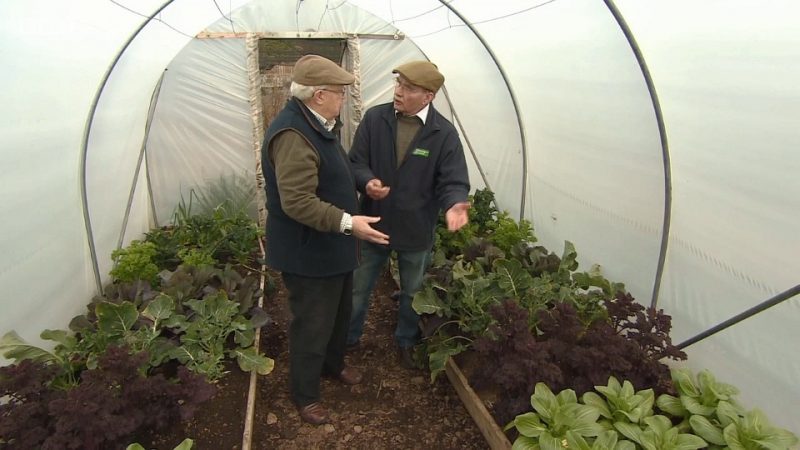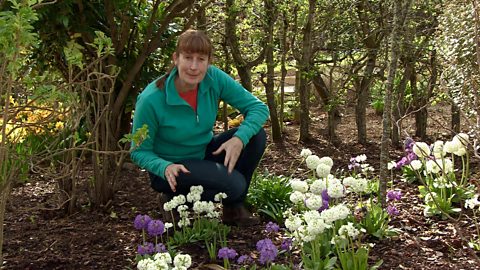Carole and Jim are also both planting potatoes; Jim is planting new blight-resistant varieties in the main veg plot, whereas Carole tries cheap and cheerful potato bags on the decking.
The typical size of a UK garden is 14 sqm, which provides little space for planting trees. Jim has asked the team to each choose their best tree for a small garden and is planting them all in Beechgrove to compare and contrast.
Saughton Park is a faded, hidden garden gem in the south west of Edinburgh. The Royal Caledonian Horticultural Society, or the Caley, as it’s affectionately known, has taken up the challenge of renovating this once-grand park and garden. George will visit the project on a regular basis during its design and build.
In The Beechgrove Garden episode 4 2017:
1. Jim has a tip for protecting grafted trees
Carole looks at fritillaria and compares their various levels of success across the garden while Jim has a tip to share about his newly planted trees for small garden.
2. Tattie Planting
It’s time to get the early potatoes planted on the main veg plot. The plot had been covered with a tarpaulin over the winter which had recently been removed. The
soil underneath was quite rough in texture and weeds were starting to grow, which indicated that the soil was warm enough for planting potatoes. Jim advocates no pre-preparation of the soil until just before planting, so that morning, Mairi our head gardener had already lightly forked over the soil.
3. Trees for a small garden
The typical size of a UK garden is 14 square metres which means that many people have limited space in which to garden so it is really important that you choose the right tree for the job for proportion and decorative value. Each of our 5 presenters has chosen their favourite tree for a small garden to add to the trees already at Beechgrove. Criteria for their choices included shape and size, rate of growth, pruning regime,autumn colour fruit etc. Into each of the planting holes went mycorrhizae to aid root establishment and a bit of fertiliser.
Jim also demonstrated a range of staking techniques. There are two main reasons for staking young trees, particularly if they are tall specimens and if the site is exposed. Firstly, to anchor the root ball preventing it from moving about. Secondly to keep the main stem vertical, whilst realising that swaying of a stem does help to strengthen and thicken it.




